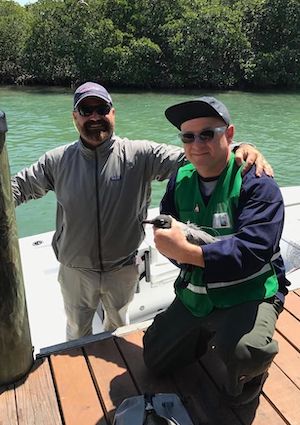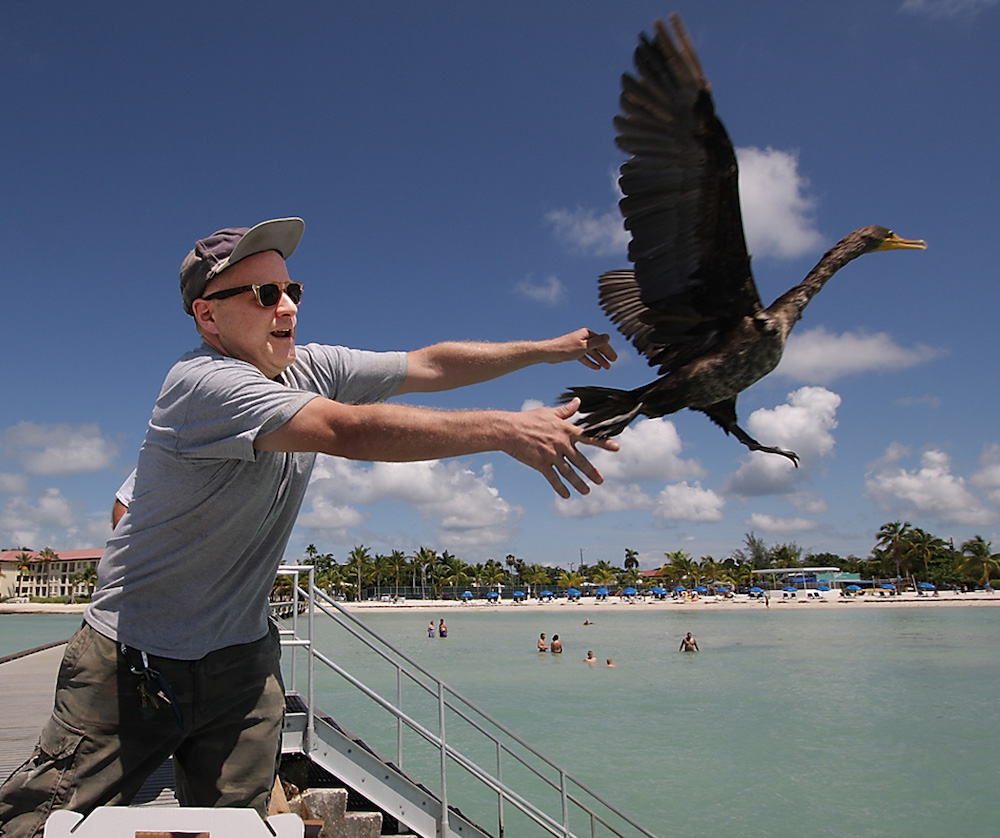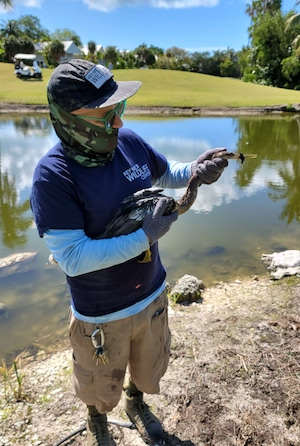Tom Sweets, now the executive director of the Key West Wildlife Center, decided to become a New York City fireman after arriving at his office near the city’s St. Vincent’s Hospital and witnessing the horrific aftermath of Sept. 11, 2001.
But he was one year past the fire department’s age limit. “That day changed my perspective,” he recalled.
Tom, a paper conservator specializing in antiquarian books and maps, decided it was time for a career change –- time for meaningful work helping others.
A graduate of the School of the Art Institute of Chicago, he moved to St. Petersburg, Florida, to teach developmentally disabled adults. He also worked in a Global Candle Gallery boutique, a job that later landed him on Key West’s Duval Street to manage the company’s island city shop for a couple of years.
Tom discovered his true calling, though, by volunteering at the Key West Wildlife Center, providing rescue and rehabilitative care to sick and injured wild birds — some in distress from fishing line entanglements and feeding by humans.
The center, located inside the 7-acre Indigenous Park on White Street, treats and rehabilitates about 1,400 wild birds and other Florida Keys creatures each year. Around-the-clock emergency rescue services are provided throughout the Lower Keys and Key West.
The facility has assisted scores of injured pelicans, many born in the Carolinas, who land in Key West after flying their first migration. It also transports feral Key West chickens, known as “red jungle fowl,” to mainland Florida ranches in Okeechobee and outside Fort Myers to live out nature-controlled, free-range lives.
Open daily except Wednesdays, the nonprofit center has 15 permanent resident birds as “educational ambassadors.” Its work is funded through family foundation donations, community fundraisers and benefactors — and plans are underway for an all-new on-site clinic to treat injured Keys wildlife.

Tom and Jason Goldfarb, a flats fisherman who sometimes assists the center with rescues, bring ashore a laughing gull in need of care.
Keys Voices: When did you first come to the Florida Keys and why?
Tom Sweets: In 2009. I began volunteering at the Key West Wildlife Center because I was fascinated by trying to help our native bird species.
KV: What aspects of the Keys environment or way of life matter most to you?
TS: Protecting some of the Keys’ last truly wild spaces: the Key West Nature Preserve’s Nature Beach and black mangroves, Indigenous Park and the Florida Keys National Marine Sanctuary. Making sure that development does not encroach or impact negatively. These special places support our native wildlife by offering safe habitat and places to feed for our local and migratory wild birds. They need to be protected.
KV: What inspired you to become passionate about respecting and protecting the Keys’ natural world?
TS: Seeing wildlife in distress and being able to make a difference in that situation. Helping these native animals survive negative interactions with humanity and giving them a chance at recovery and a return to the wild is what motivates me. Working with our partner rescue and law enforcement organizations to help other native species inspires me as well.
KV: How does that passion influence your work or profession?
TS: To continually improve the safest and most proficient ways of rescuing wildlife so they can be treated. I am always improving on our motto of “Ensuring the future of our diverse native wildlife by providing timely rescues and quality rehabilitation with the hope of release back to the wild.”
KV: What keeps you energized, challenged, and focused on your path?
TS: Seeing wildlife that was rescued weak, sick, entangled or otherwise injured recover in our clinic and be able to be released. Seeing the Keys community so actively involved with calling about wildlife in distress.
KV: What do you hope your positive environmental actions will accomplish?
TS: Raising awareness about all the human-generated threats to wildlife. This helps reduce the amount of monofilament entanglements, trash, plastic — benefiting all the species that call the Keys home.
KV: What message do you want your actions and example to communicate to people you encounter?
TS: Treat wildlife and wild spaces with respect. These spaces are critical to the health and welfare of all those living in the Keys. Try to reduce behaviors that can negatively impact native wild species.
KV: What’s your favorite natural or eco-friendly activity in the Keys?
TS: Helping with beach and natural area cleanups. I also enjoy bird-watching throughout the Keys. Visiting Florida Keys HawkWatch and all our other Keys rescue groups is always a big thrill.



